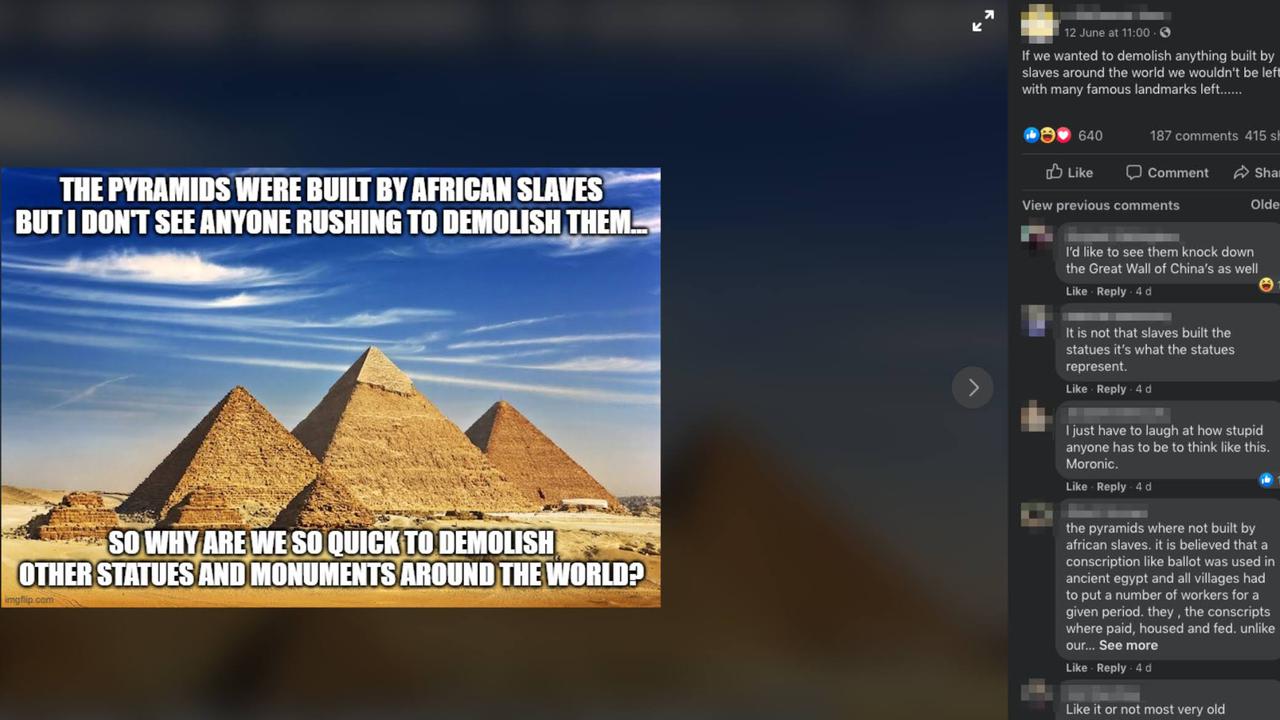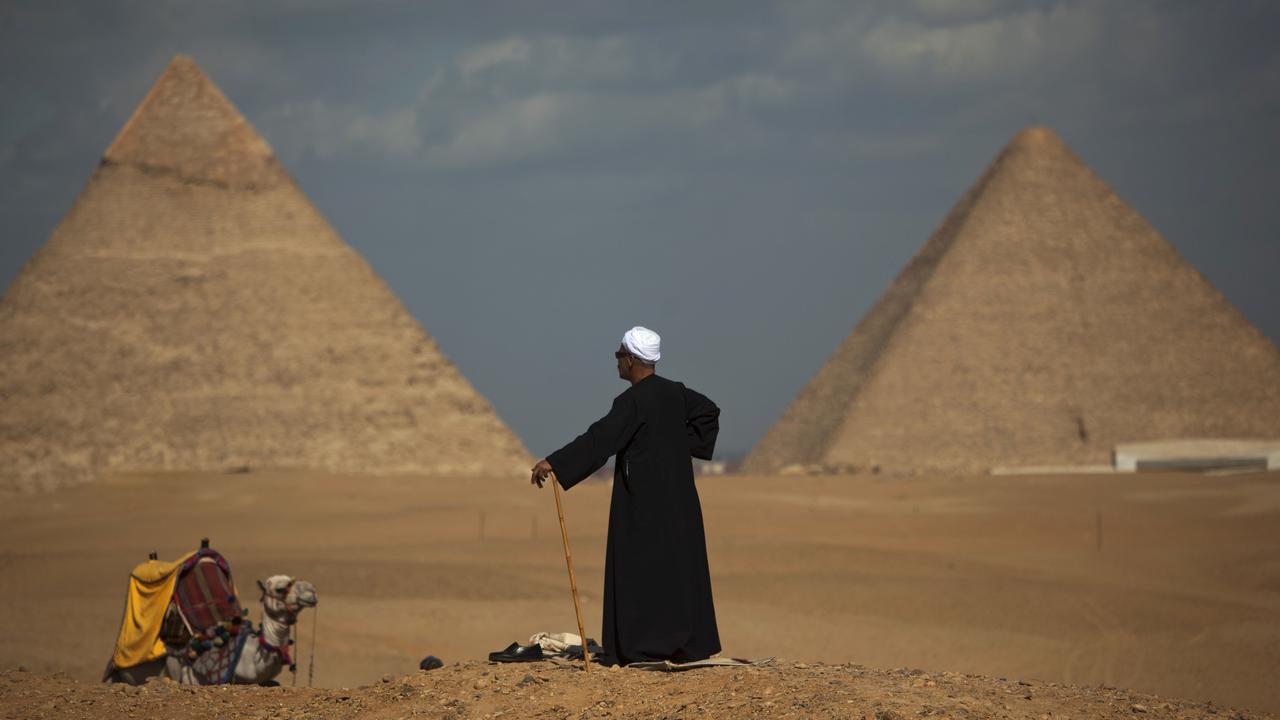The Statement
After protesters in the UK tore down the statue of a 17th century slave trader, Australian Facebook users have been sharing memes claiming the pyramids were built by slaves.
The June 12 Facebook post features a photograph of the Pyramids of Giza overlaid with the words: "The pyramids were built by african slaves but I don't see anyone rushing to demolish them …. So why are we so quick to demolish other statues and monuments around the world?"
The post's caption reads: "If we wanted to demolish anything built by slaves around the world we wouldn't be left with many famous landmarks left [sic] ……"
The post has been viewed over 35,000 times, been shared over 400 times and commented on over 150 times.

The Analysis
The death of US man George Floyd in police custody and the Black Lives Matter demonstrations that followed have sparked anti-racism protests around the world including in the United Kingdom and Australia.
Statues of historical figures associated with slavery became a focus of some protests. In the UK protesters tore down the statue of Edward Colston in Bristol, who as the deputy head of the Royal African Company trafficked slaves from Africa to the UK.
During a June 12 protest in Sydney police encircled a statue of Captain Cook over concerns protesters would attempt to topple it.
The targeting of memorials and historical statues has sparked debate, with some commentators and politicians arguing against it
The June 12 Facebook post sought to present Egypt's pyramids as an example of something "built by african slaves" and question why they were not targeted.
But the pyramids were not built by slaves.
Erected 4500 years ago, the Pyramids of Giza are relics of Egypt's Old Kingdom. The world-famous structures were erected as tombs for the pharaohs.
How the pyramids of Giza were built remains one of Egypt's biggest mysteries but Macquarie University Egyptologist Dr Karin Sowada told AAP FactCheck, that archaeological evidence shows the pyramids were not built by slaves.
That misconception began with the Ancient Greek historian Herodotus and later continued with Jewish historian Flavius Josephus, who both claimed that slaves, Hebrew or otherwise, built the pyramids.
"However it has to be remembered that Herodotus was writing 2000 years after the pyramids were built," Dr Sowada said.
"And considering the biblical timeline there's no possible way, chronologically, that Hebrews were in Egypt when the pyramids were under construction."
Slavery did exist at certain periods in Ancient Egyptian history and many slaves were likely foreign prisoners of war. Yet archaeological evidence shows that an Egyptian workforce built the pyramids, Dr Sowada said.
One key piece of evidence discovered in 2013 was a daily journal written by a man called Merer, an official responsible for transporting blocks from stone quarries to the pyramids.
"The picture painted in the papyrus fragments is of a well-organised, well-provisioned team of about 40 men... who were not slaves but people well-skilled in their jobs," Dr Sowada said.
Another piece of evidence is the discovery of a workers' settlement at Giza, which showed the accommodations of an Egytpian workforce likely made up of a permanent cohort of elite workers such as stonemasons and labour teams.
Farm labourers were drafted into the project during the yearly flooding of the Nile which inundated farmlands, with the work seen as a period of obligatory public service, not slavery, Dr Sowada said.
"Think of it as the population called in when there wasn't much work around to help with a large nation-building project – almost an ancient 'work for the dole' arrangement, except wages were paid in food and lodging," she said.

The Verdict
Based on the evidence, AAP FactCheck found the claim that slaves built the pyramids to be false. Experts say evidence shows skilled workers worked on the pyramids with labour teams paid in food and lodging.
False - The primary claims of the content are factually inaccurate.
* AAP FactCheck is accredited by the Poynter Institute's International Fact-Checking Network, which promotes best practice through a stringent and transparent Code of Principles. https://.aap.com.au/











